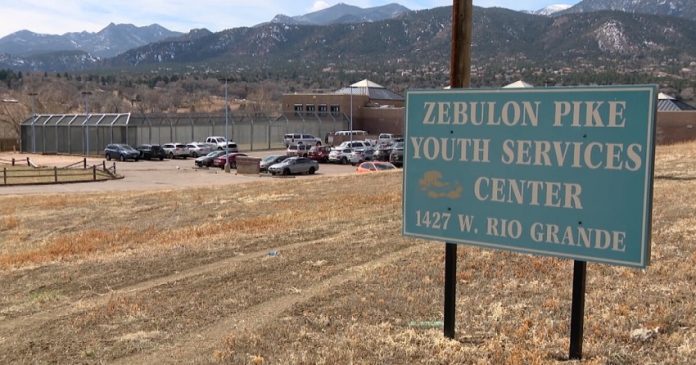Pueblo, CO — In response to growing concerns over juvenile crime in Colorado, state lawmakers have advanced a bill designed to address the surge in violent youth offenses across the state. On Tuesday, the House Health and Human Services Committee voted overwhelmingly in favor of House Bill 25-1146, passing it with a 12-1 vote. The bill, which has been amended following feedback from various stakeholders, aims to balance the need for increased detention capacity with a focus on community-based services for youth offenders.
Originally, the bill proposed increasing the state’s juvenile detention bed cap from 215 to 254 beds. However, the amended version does not increase the cap across the board. Instead, it allows for expanded use of 39 emergency detention beds under specific conditions. These beds can now be utilized without the need for a court order, though they can only be used if all other detention beds in a district are occupied.
In addition to modifying bed usage criteria, the legislation also requires facilities to demonstrate efforts to connect youth offenders with community-based services and outlines a pilot program for installing body-worn cameras on facility staff.
The push for this legislation comes amid troubling statistics from Colorado Springs, where violent juvenile crime has seen a dramatic increase. Since 2021, the city has experienced a 60% rise in the number of violent juvenile suspects. Police officials have reported that juveniles are responsible for a significant portion of the smash-and-grab burglaries that have plagued local businesses in recent months.
Colorado Springs Police Chief Adrian Vasquez and 4th Judicial District Attorney Michael Allen have both voiced support for increasing juvenile detention capacity. They argue that the current system, which often operates at or near capacity, forces difficult decisions for judges who must determine which juveniles should remain in detention. When beds are full, offenders accused of violent crimes may be released, only to reoffend shortly after.
“What we know now is that we’re almost always operating at capacity, meaning that there’s always 27 kids in custody,” District Attorney Allen said. “So if a kid commits a violent offense and is put into custody pending trial, another juvenile has to be released into a home environment that may not be supportive or law-abiding.”
The bill has garnered support from several district attorneys, including 17th Judicial District Attorney Brian Mason and 6th Judicial District Attorney Sean Murray, who argue that increasing access to emergency detention beds is critical for managing the juvenile crime crisis.
However, the bill has also sparked concerns from some advocates who urge the state to focus on alternative solutions to detention. Anaya Robinson, a senior policy strategist with the ACLU of Colorado, emphasized that the state must prioritize getting juveniles into appropriate services rather than increasing detention capacity.
“We believe the focus must remain on getting kids out of detention as quickly as possible and into supportive services and placements,” Robinson said. “Annually, about one third of kids in detention are simply awaiting those mitigating placements and services. This makes evident the fact that Colorado isn’t doing what it needs to as a state to ensure current or future community safety.”
The amended bill, as Robinson notes, seeks to tackle these issues by providing quicker access to community-based services for youth offenders, while still allowing for emergency detention when necessary.
Colorado’s juvenile detention system has been under pressure for years. In 2003, the state set a statutory bed cap of 479 juvenile detention beds. Over the years, that cap has been reduced significantly, and the current cap stands at 215 beds, with 22 emergency beds available under specific circumstances. Each of the state’s eight youth detention centers is allocated a certain number of beds. For instance, the Zebulon Pike Youth Services Center in Colorado Springs has 27 beds, while the Pueblo Youth Services Center has 19.
With the legislative session ongoing, House Bill 25-1146 continues to generate debate. The bill’s supporters argue that it is a necessary step in addressing rising juvenile crime, while critics emphasize the importance of prioritizing rehabilitative services over detention.
As the bill moves forward, it reflects the state’s struggle to find a balance between public safety and the rehabilitation of young offenders. With juvenile crime continuing to rise in Colorado Springs and other parts of the state, lawmakers will need to carefully weigh the benefits and potential drawbacks of expanding detention capacity versus investing in alternative, community-based solutions.



